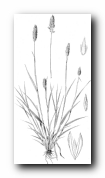
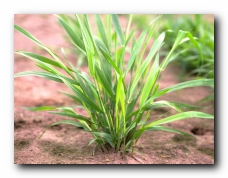
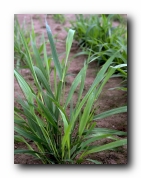
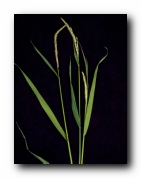
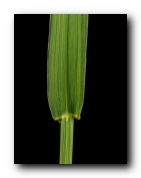
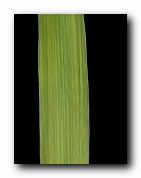
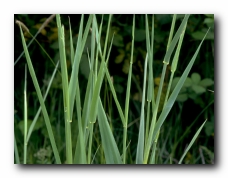
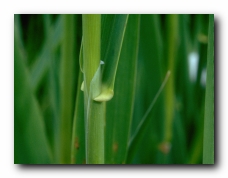
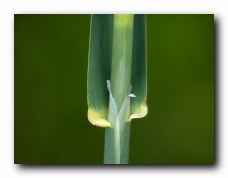
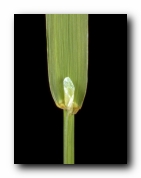
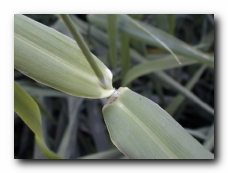
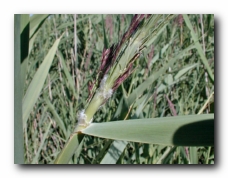
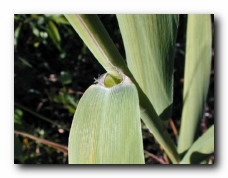
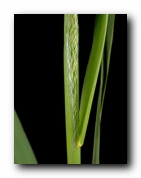
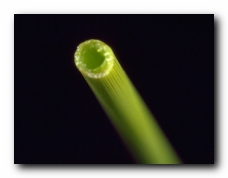
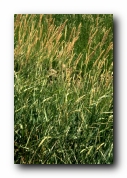
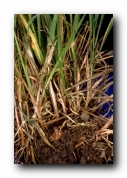
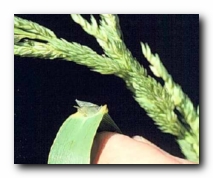
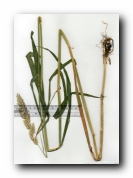
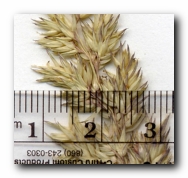
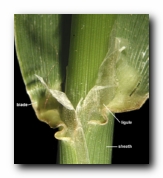
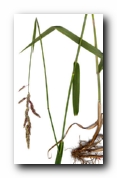
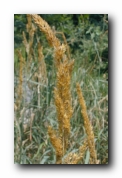
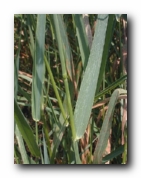
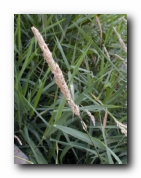
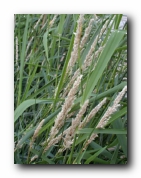
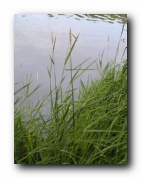
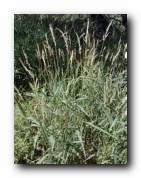
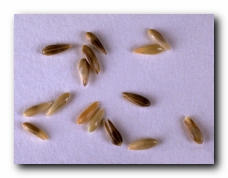
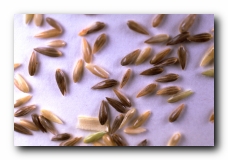

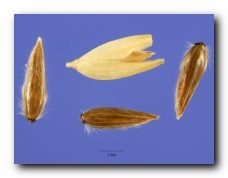
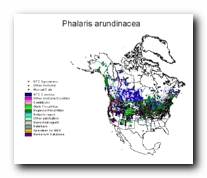
40" Rows: Broadcast:
Loam:
Clay:
Low
High
High
Habit: Glabrous glaucous perennial, with horizontal creeping rhizomes, growing in large clumps. Culms: Erect, 60-150 cm. tall. Blades: 10-25 cm. Iong, 6-16 mm. wide, flat. Sheaths: Longer than the internodes or the upper shorter, usually smooth. Ligule: Thin, 2-6 mm. Iong. Inflorescence: Panicle 9-16 cm. Iong, dense, narrow, 1-2 cm. thick, the branches spreading during anthesis, contracted later, the lower as much as 5 cm. Iong. Spikelets: Crowded, 4-6 mm. Iong, lanceolate, pale, disarticulating above the glumes, with a terminal fertile floret, and 2 sterile florets below. Glumes: About 5 mm. Iong, narrow, acute, the keel scabrous, very narrowly winged, 3-nerved, scabrous. Lemmas: Sterile lemmas reduced to minute hairy scales, 1 mm. Iong; fertile lemma lanceolate, 4 mm. Iong, awnless, obscurely 3-5-nerved, with a few appressed hairs. Palea: Faintly 2-nerved. Habitat: Wet places, marshes, riverbanks. June-August. Use: Because of its ability to withstand long periods of flooding, this grass is important in plantings in wet areas. Synonyms: Phalaris arundinacea L. var. picta L.
Special Notes:
Reed Canarygrass (Phalaris caroliniana) Information #2
Reed Canarygrass (Phalaris caroliniana) Information #3
Reed Canarygrass (Phalaris caroliniana) Information #4